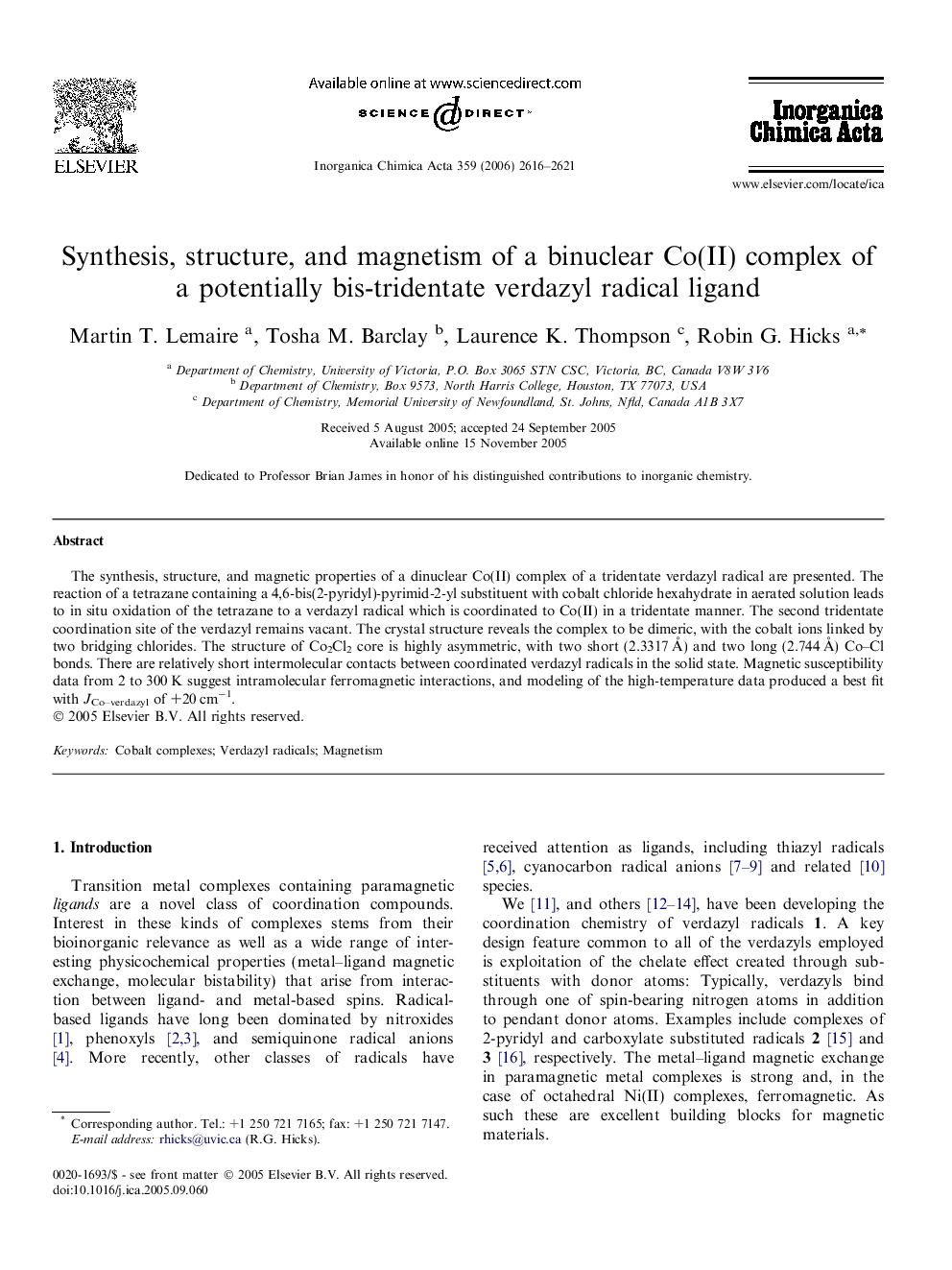| کد مقاله | کد نشریه | سال انتشار | مقاله انگلیسی | نسخه تمام متن |
|---|---|---|---|---|
| 1312997 | 975522 | 2006 | 6 صفحه PDF | دانلود رایگان |

The synthesis, structure, and magnetic properties of a dinuclear Co(II) complex of a tridentate verdazyl radical are presented. The reaction of a tetrazane containing a 4,6-bis(2-pyridyl)-pyrimid-2-yl substituent with cobalt chloride hexahydrate in aerated solution leads to in situ oxidation of the tetrazane to a verdazyl radical which is coordinated to Co(II) in a tridentate manner. The second tridentate coordination site of the verdazyl remains vacant. The crystal structure reveals the complex to be dimeric, with the cobalt ions linked by two bridging chlorides. The structure of Co2Cl2 core is highly asymmetric, with two short (2.3317 Å) and two long (2.744 Å) Co–Cl bonds. There are relatively short intermolecular contacts between coordinated verdazyl radicals in the solid state. Magnetic susceptibility data from 2 to 300 K suggest intramolecular ferromagnetic interactions, and modeling of the high-temperature data produced a best fit with JCo–verdazyl of +20 cm−1.
The synthesis, structure, and magnetism of a binuclear cobalt(II) complex containing coordinated verdazyl radicals are described. The cobalt ions contain one tridentate verdazyl and are connected by two bridging chlorides. Magnetic susceptibility analyses indicated ferromagnetic Co–verdazyl interactions and negligible Co–Co interactions.Figure optionsDownload as PowerPoint slide
Journal: Inorganica Chimica Acta - Volume 359, Issue 9, 1 June 2006, Pages 2616–2621